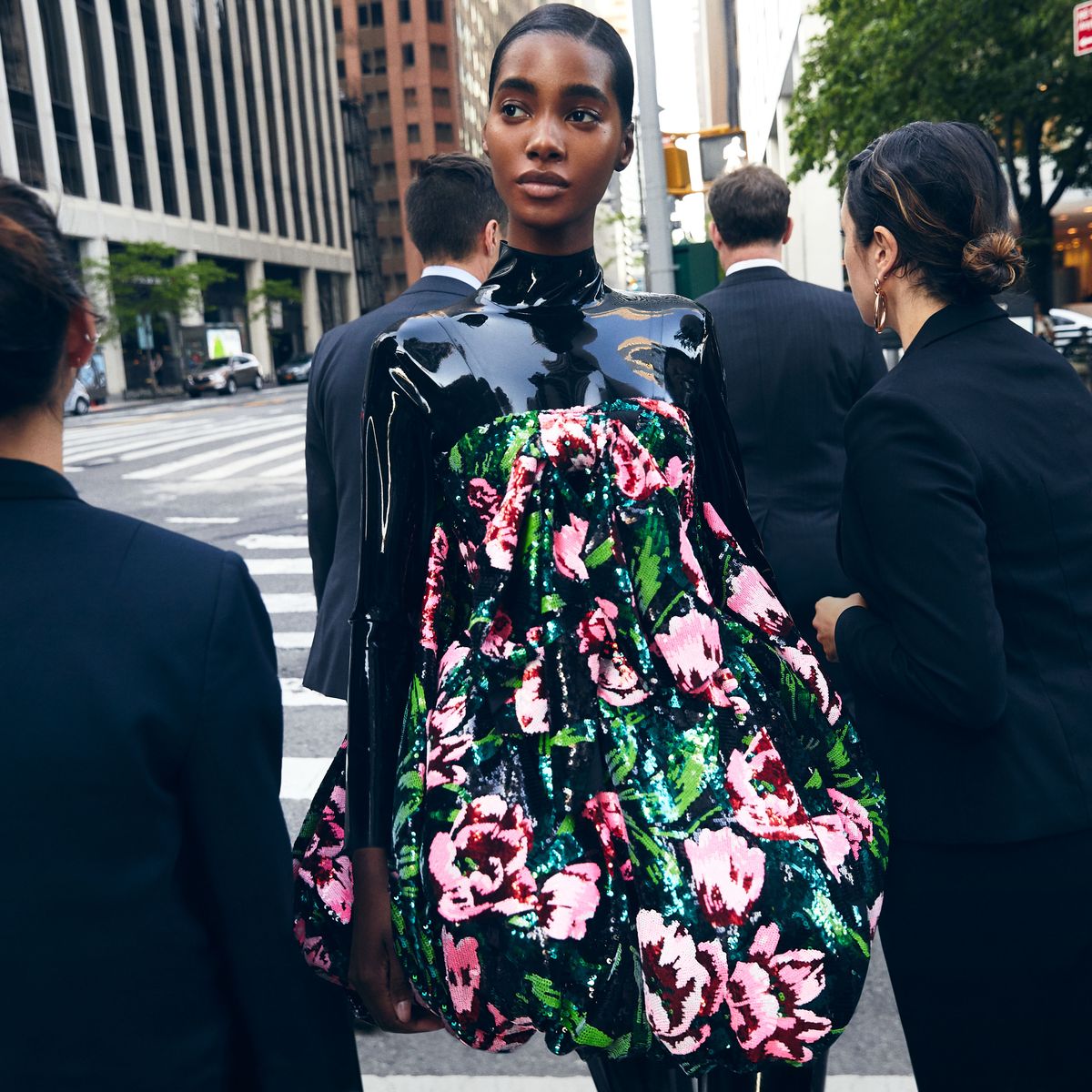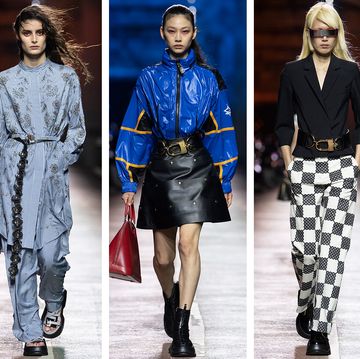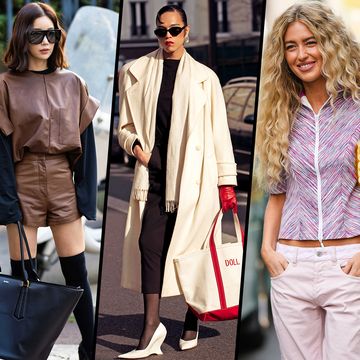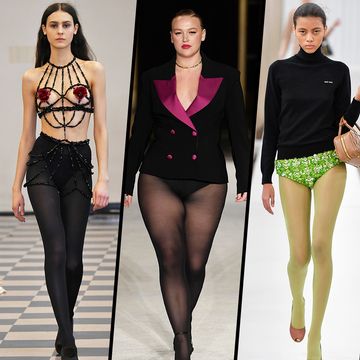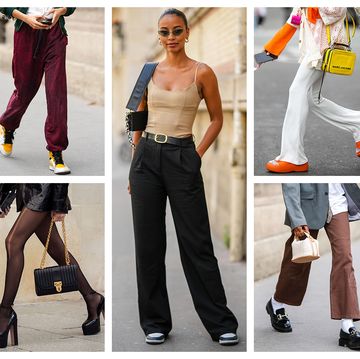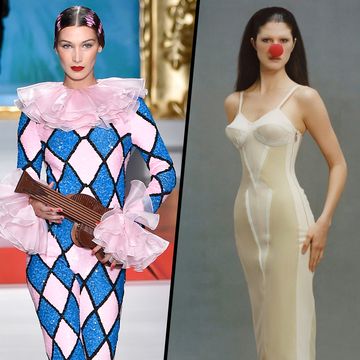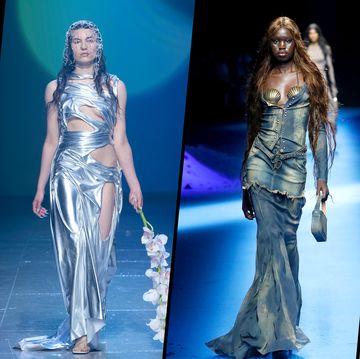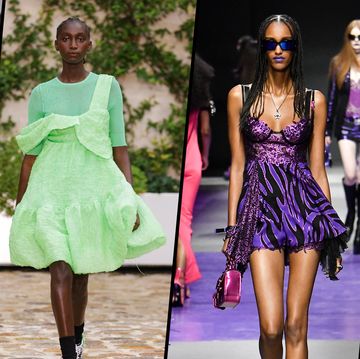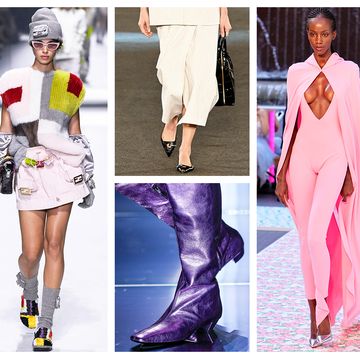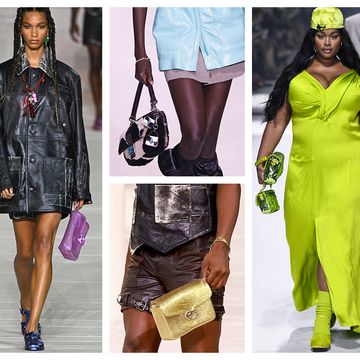There is a scene in Knock Down the House, the award-winning documentary that tracks four women running for Congress in 2018, in which Alexandria Ocasio-Cortez is sitting on the couch in her living room, breathing deeply. In only a few hours, the then 28-year-old bartender from the Bronx—and complete newcomer to politics—must go on live TV and debate 10-term Democratic congressman Joe Crowley in an attempt to unseat him from his position. It will not be an easy or necessarily pleasant task. She closes her eyes, extends her arms above her head, and exhales. “I need to take up space, I need to take up space,” she says, waving her arms around her. “I am here.”
In the debate, Ocasio-Cortez challenges Crowley on the issues affecting their constituency with such confidence that you would never know that she’d had any doubts or fears at all. As it turned out, her mantra worked, both figuratively and literally. And it was a relatable one. Women from all walks of life, and in every industry and profession, have been fighting for their right to take up space since long before the 2018 primary races, and will continue to do so long after. Whether in the institutions that barred us, the sports that said we weren’t worthy, the voting booth, the workplace, or the White House, every day and everywhere, women are asserting their right to be in the room, at the table, and directing the conversation. The fight extends to the quotidian as well: We resist manspreading on our commutes, mansplaining in our offices, and taking on the lion’s share of emotional labor in our homes. And when words are simply not enough, what we wear can convey silent but impactful protest.
For example, and most simply: No. That was only one of several messages emblazoned on the oversize tulle dresses presented at Viktor & Rolf’s spring couture show. The dress was as big as a tiny house, one that would require walls to be knocked down and doors to be taken off hinges upon the wearer’s arrival. An enormous, funereal, almost Victorian black gown bore an out-of-place sunny graphic saying, “I want a better world”: idealism emerging from grim reality. A third, with shoulders stacked up threateningly to the model’s ears, said: “Leave me alone.”
More From ELLE

Larger-than-life, over-the-top, and literally space-occupying looks that emphasized a woman’s right to be in the room were everywhere on the fall 2019 runways. Just call it womanspreading. In Moncler’s Genius capsule collection with Pierpaolo Piccioli, traditional puffer silhouettes became inflated, a voluminous announcement of womanhood. While enormous skirts unfolded and expanded around models like sinister bouncy castles, heads, necks, and torsos were enrobed in bulging armor that telegraphed a readiness for battle. The looks served as a sartorial defense mechanism, the fashion equivalent of a banner declaring, “We’re here, and we will not be ignored.” The effect made its way onto the red carpet as well: Lady Gaga wore a cornflower-blue Valentino gown with balloon sleeves and a generous train to accept her Golden Globe for A Star Is Born. What better visual proof that—as they say in show business—Gaga, as auteur and near-EGOT, had arrived?
At Alexander McQueen’s and Marc Jacobs’s shows, the message was just as loud, with feminine colors, flowery appliqués, outsize ruffles, and delicate fabrics in hulking sizes and shapes that seemed to embrace the message that femininity, in all its forms, is fearless. And at Burberry, Riccardo Tisci crafted a puffer jacket whose prevailing mood was something like Joan of Arc going to war clad in a sleeping bag.
This movement toward all things oversize has its roots in past feminist waves. Suffragettes marching for the right to vote donned all white as a savvy ploy to get media coverage for their cause. Katharine Hepburn challenged the idea that a movie star must be “ladylike” by wearing slacks in the 1930s, when women could still be arrested for doing so. When women flooded the workforce in the 1980s, shoulder pads became a symbol of assertiveness in the boardroom. It stands to reason, then, that in this particular era, when women are fighting back against the forces that hope to keep us down, in numbers that we have hardly ever seen, we should want to communicate that we will not be backing down, not saying we’re sorry, and not shrinking to make anyone else more comfortable. You’d just better hope the room is big enough to contain us.
Photographed by Zoey Grossman. Styled by Charles Varenne. Hair by Brent Lawler
for Oribe; makeup by Tyron Machhausen for Chanel; manicure by Mar y Sol for Essie; casting by Richard Blandino; model: Tami Williams at the Society Management; produced by Elise Connett at 143 Productions; location: The Square Diner, Tribeca.
Dayna Evans is a writer in New York. You can read her work here.
